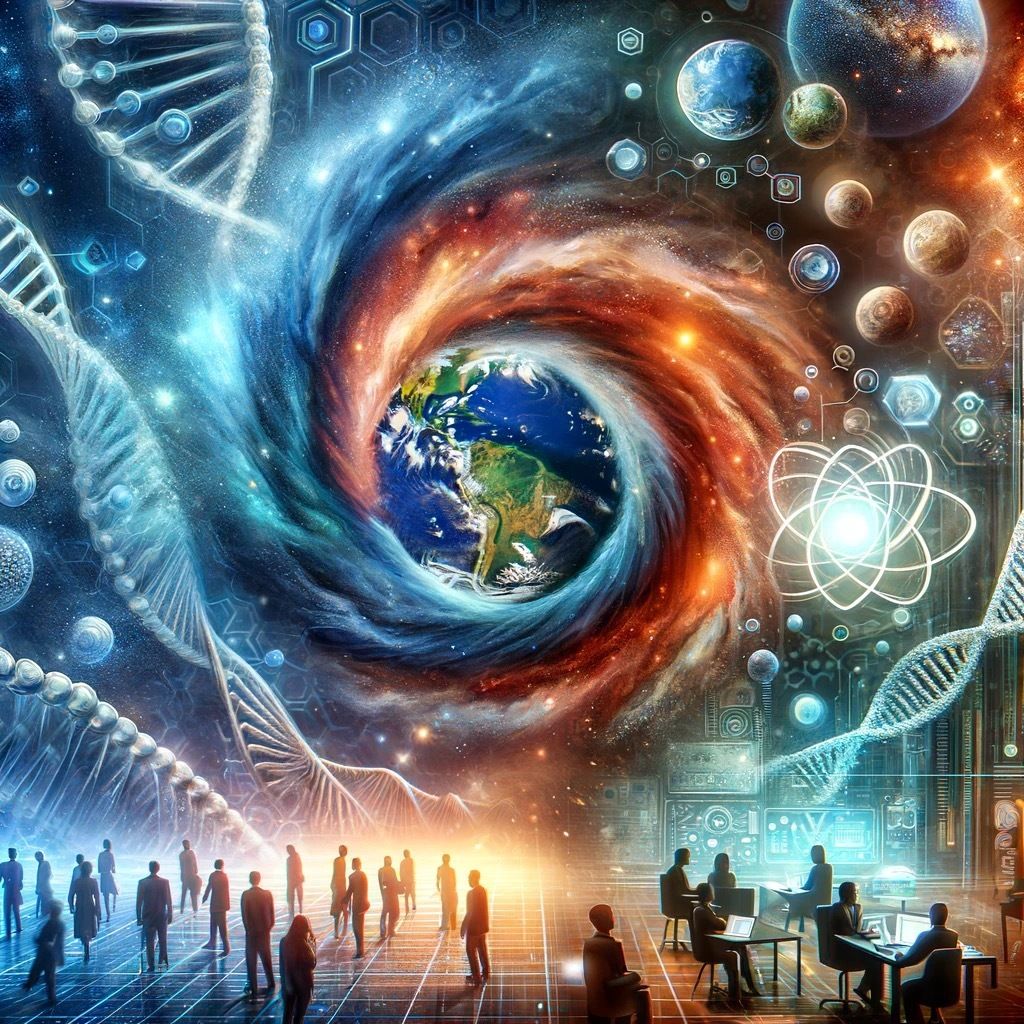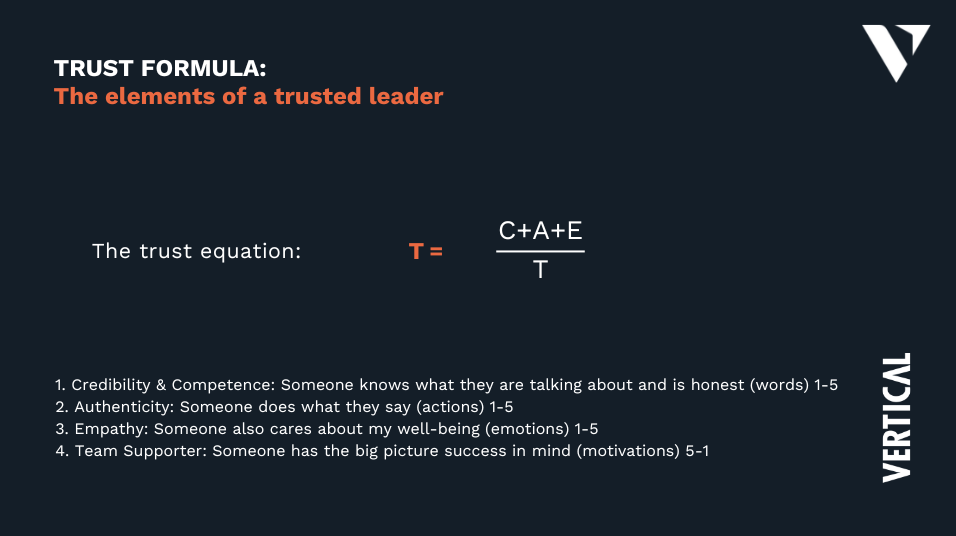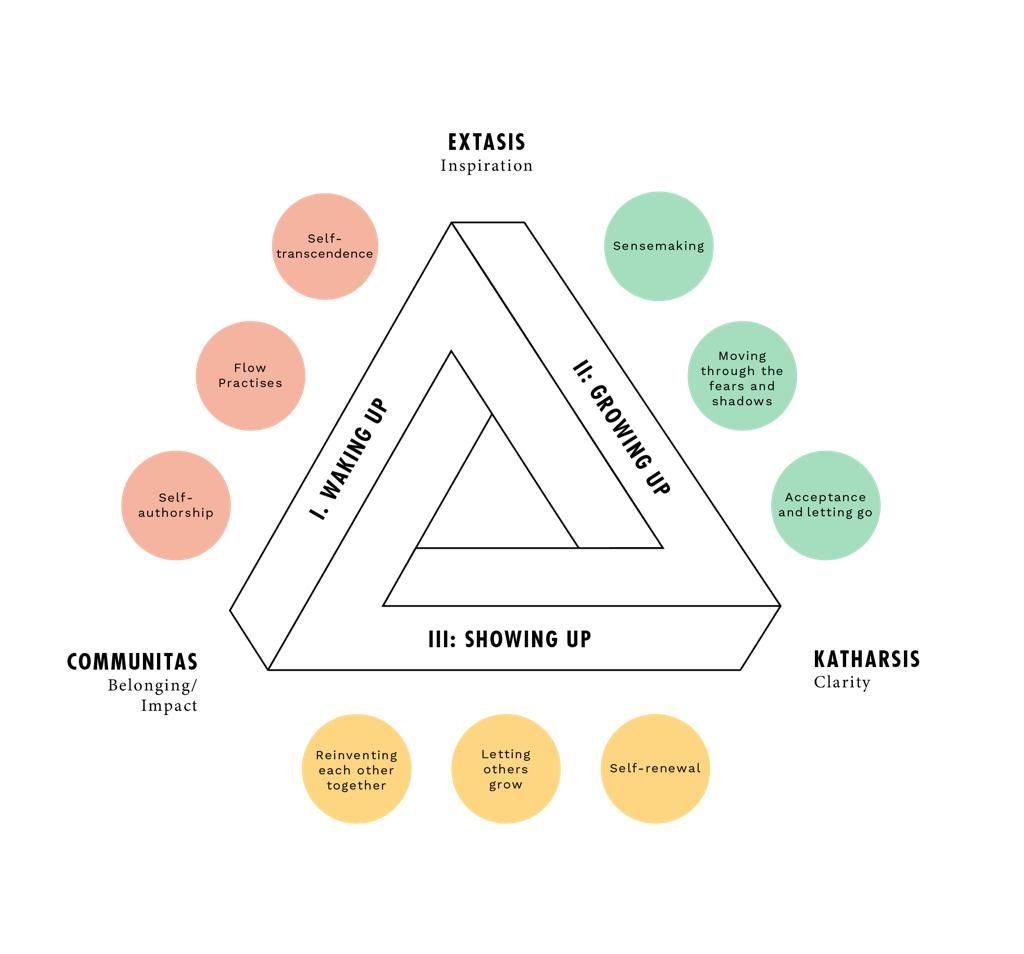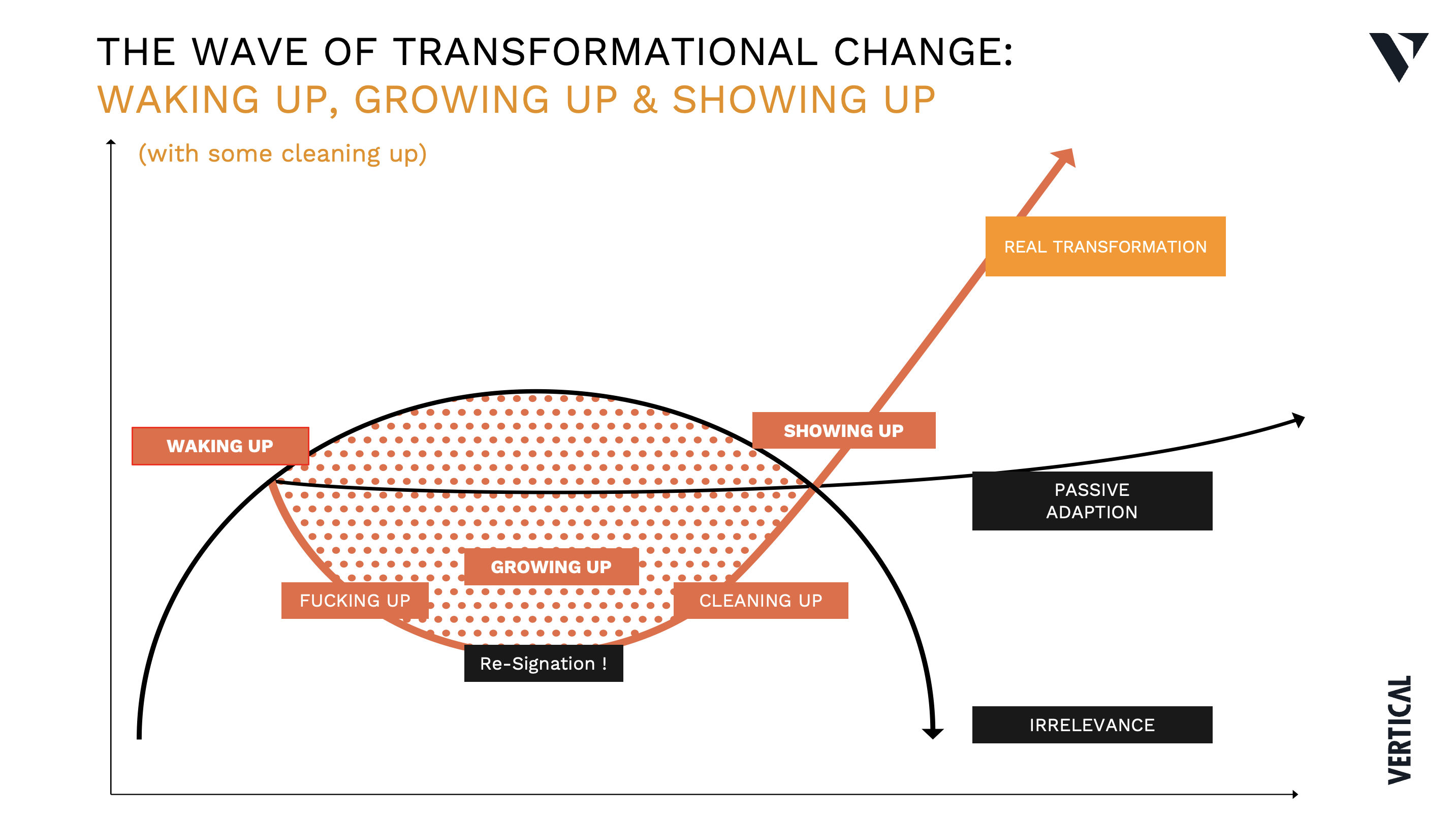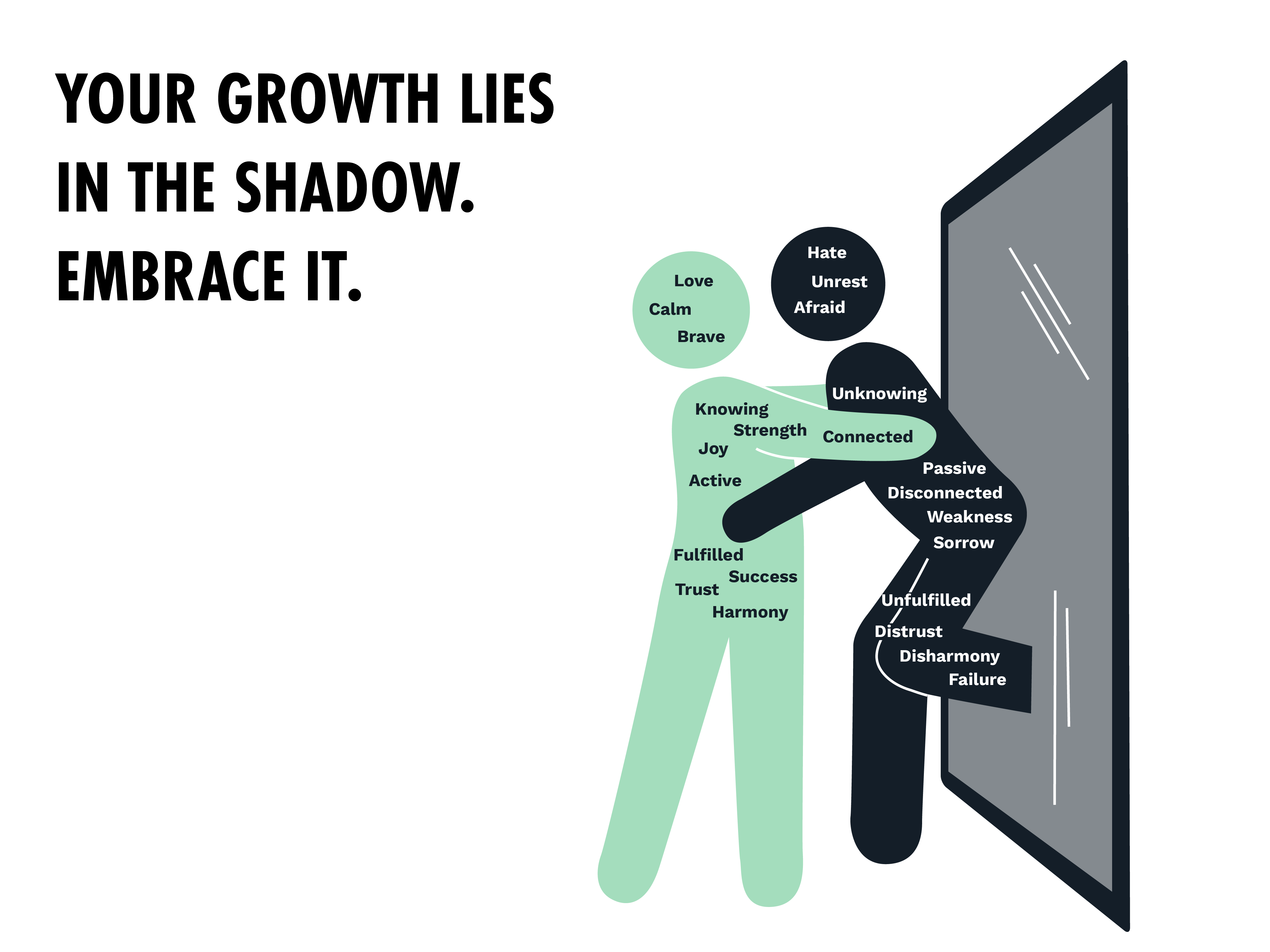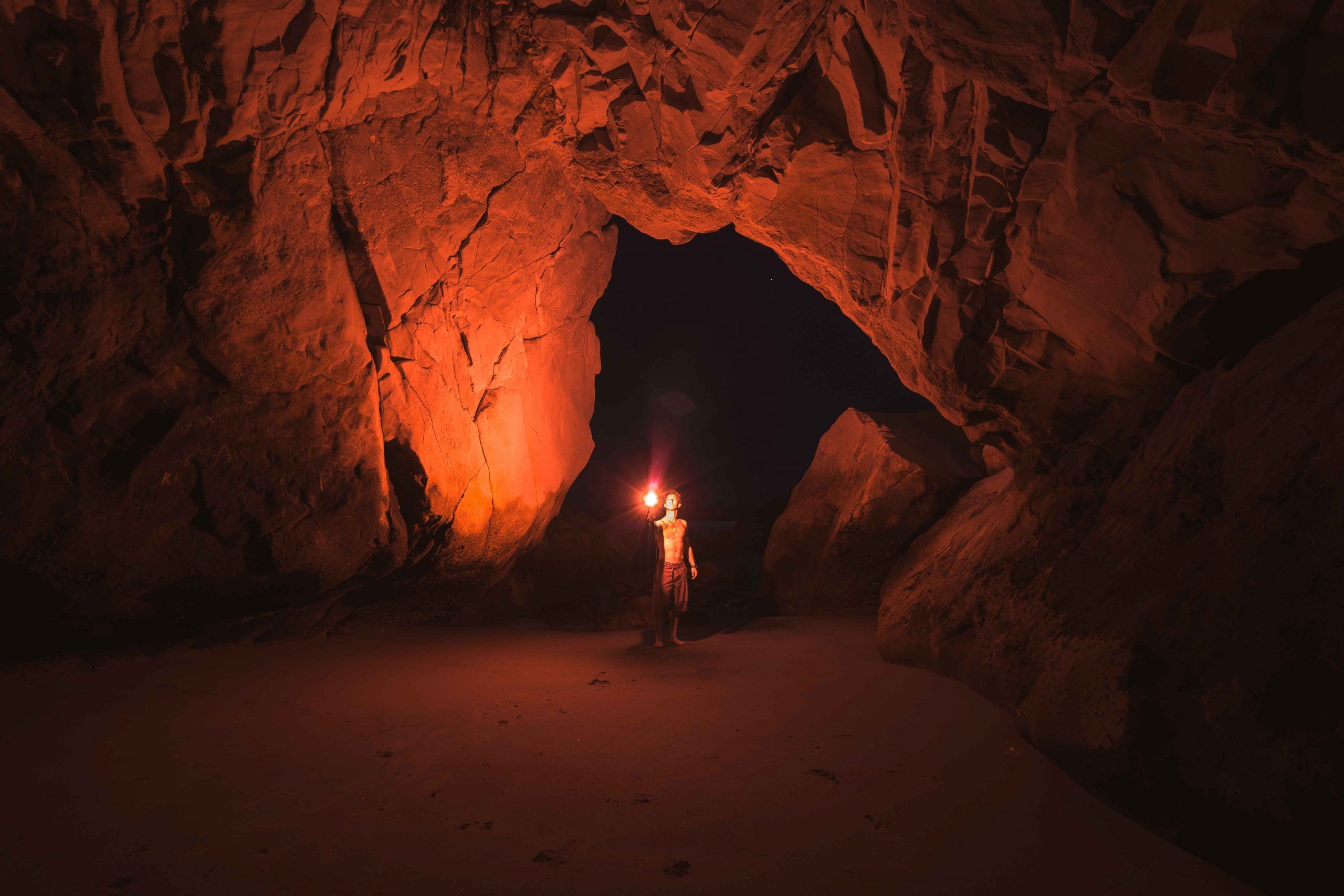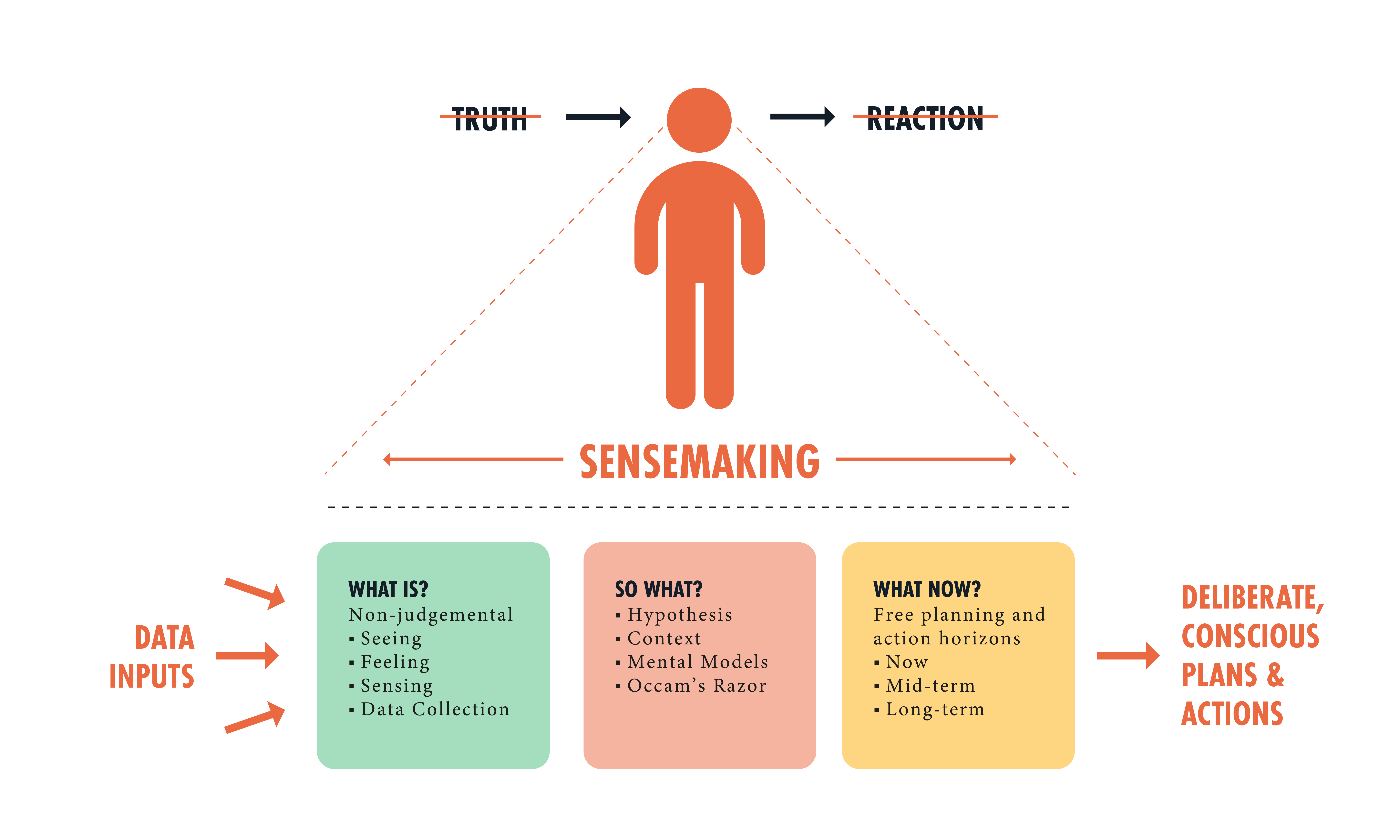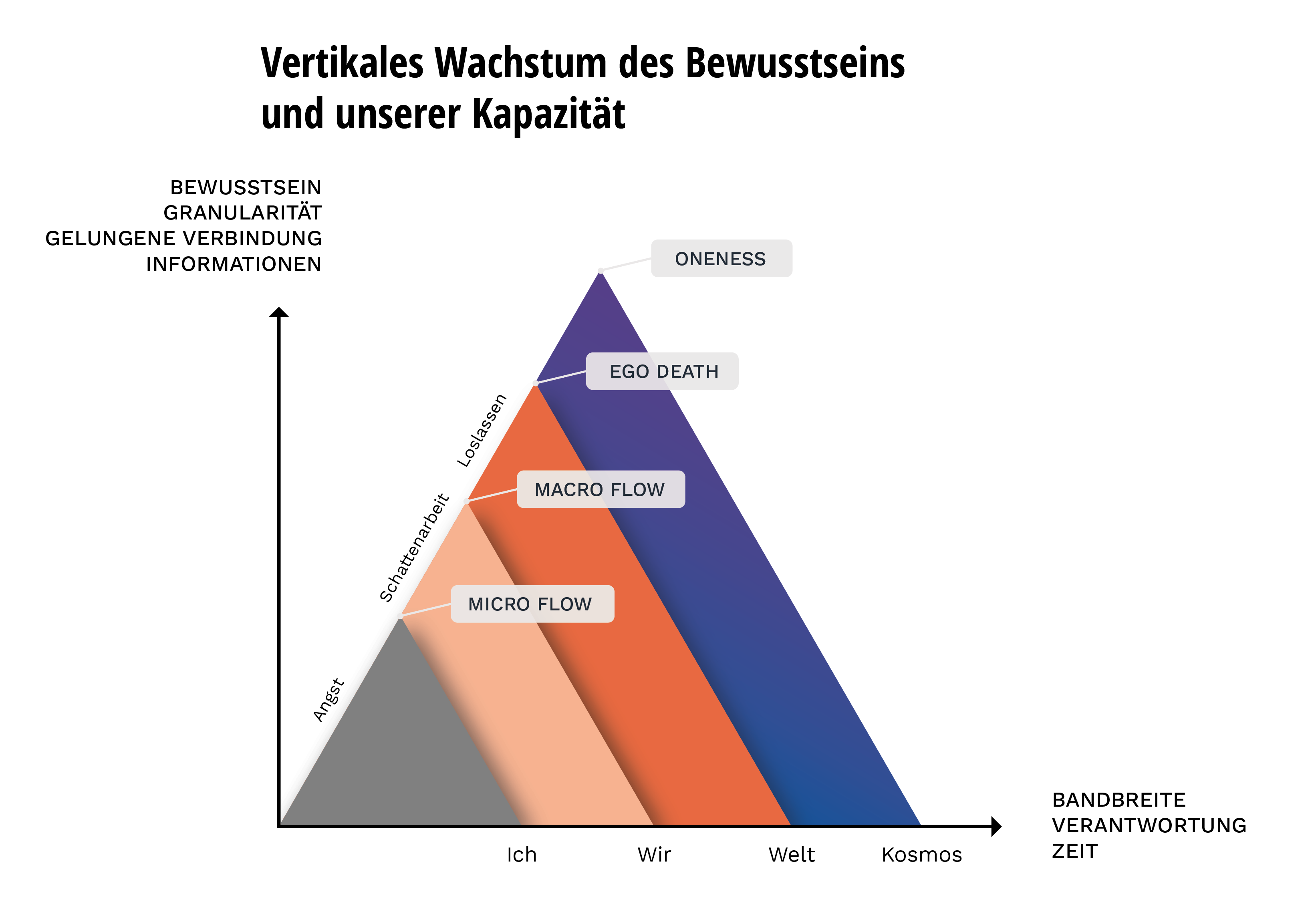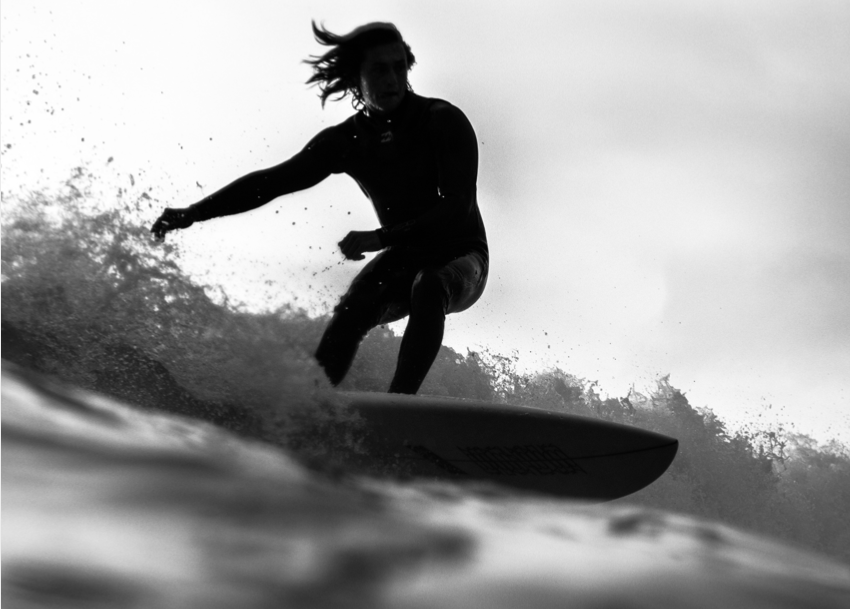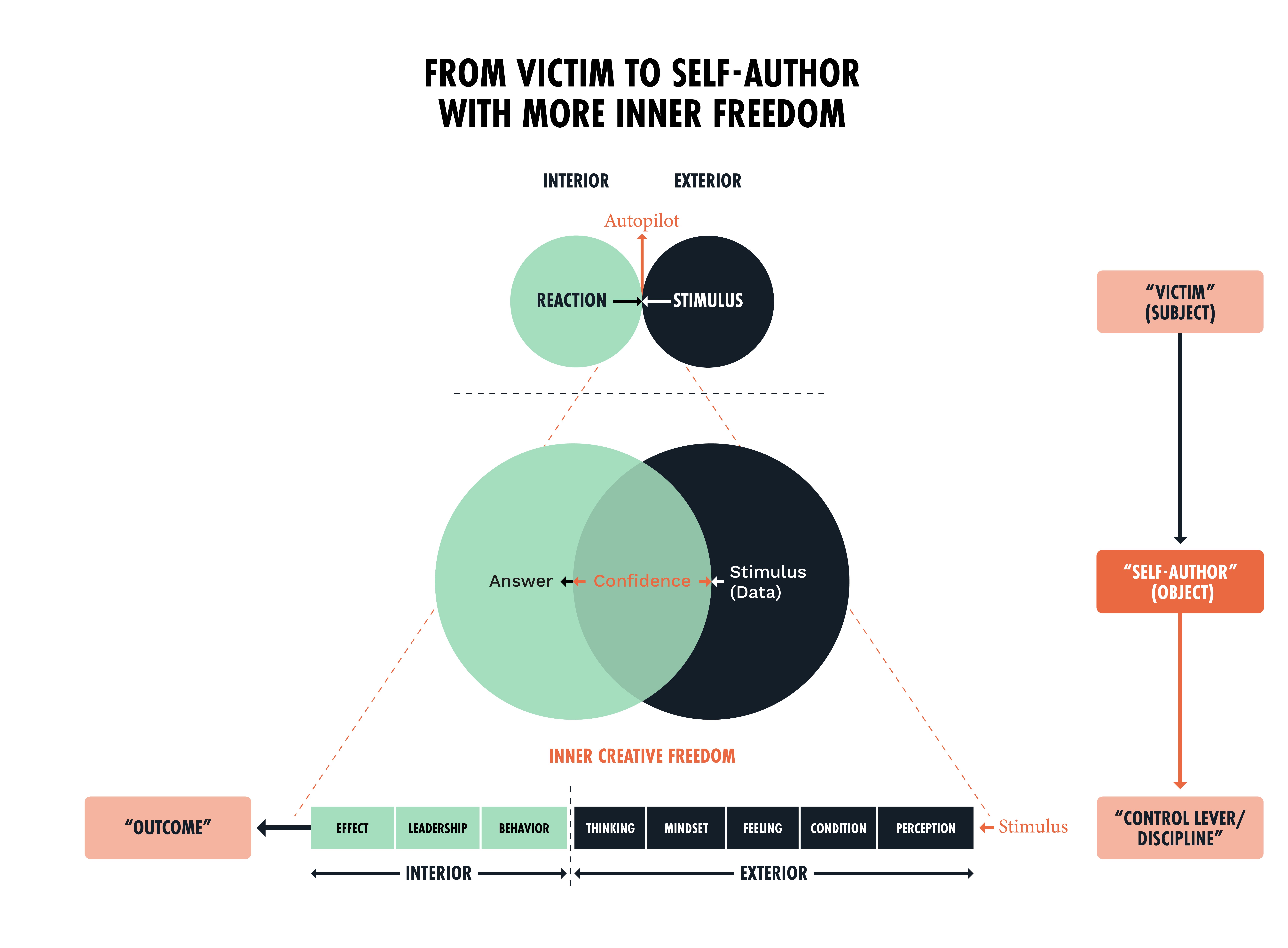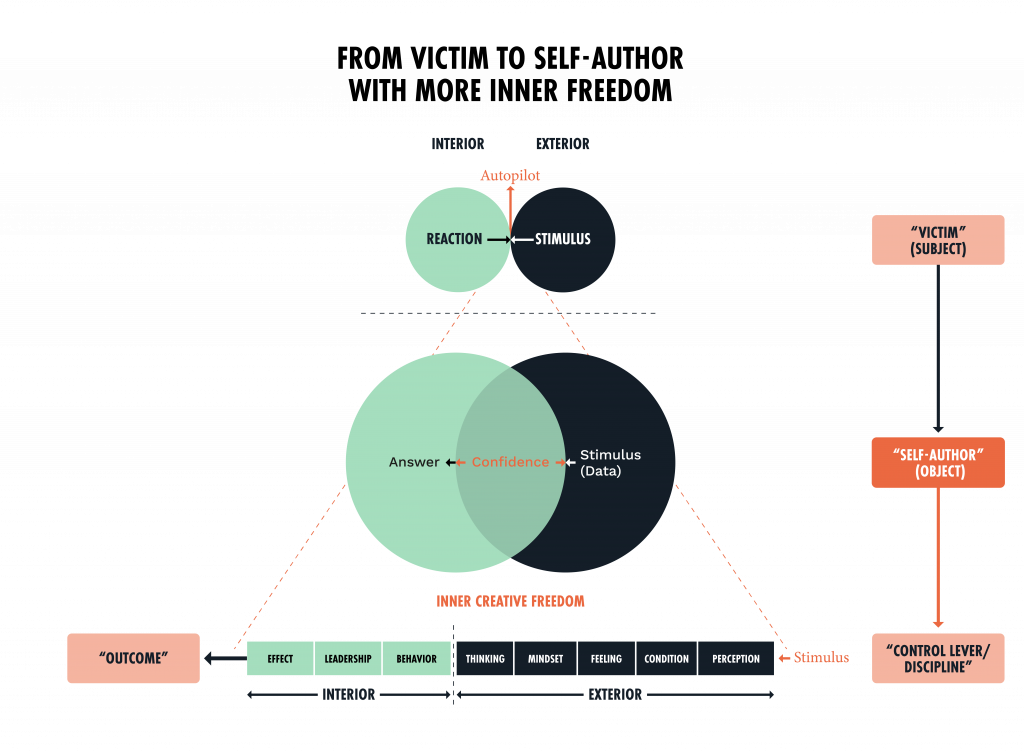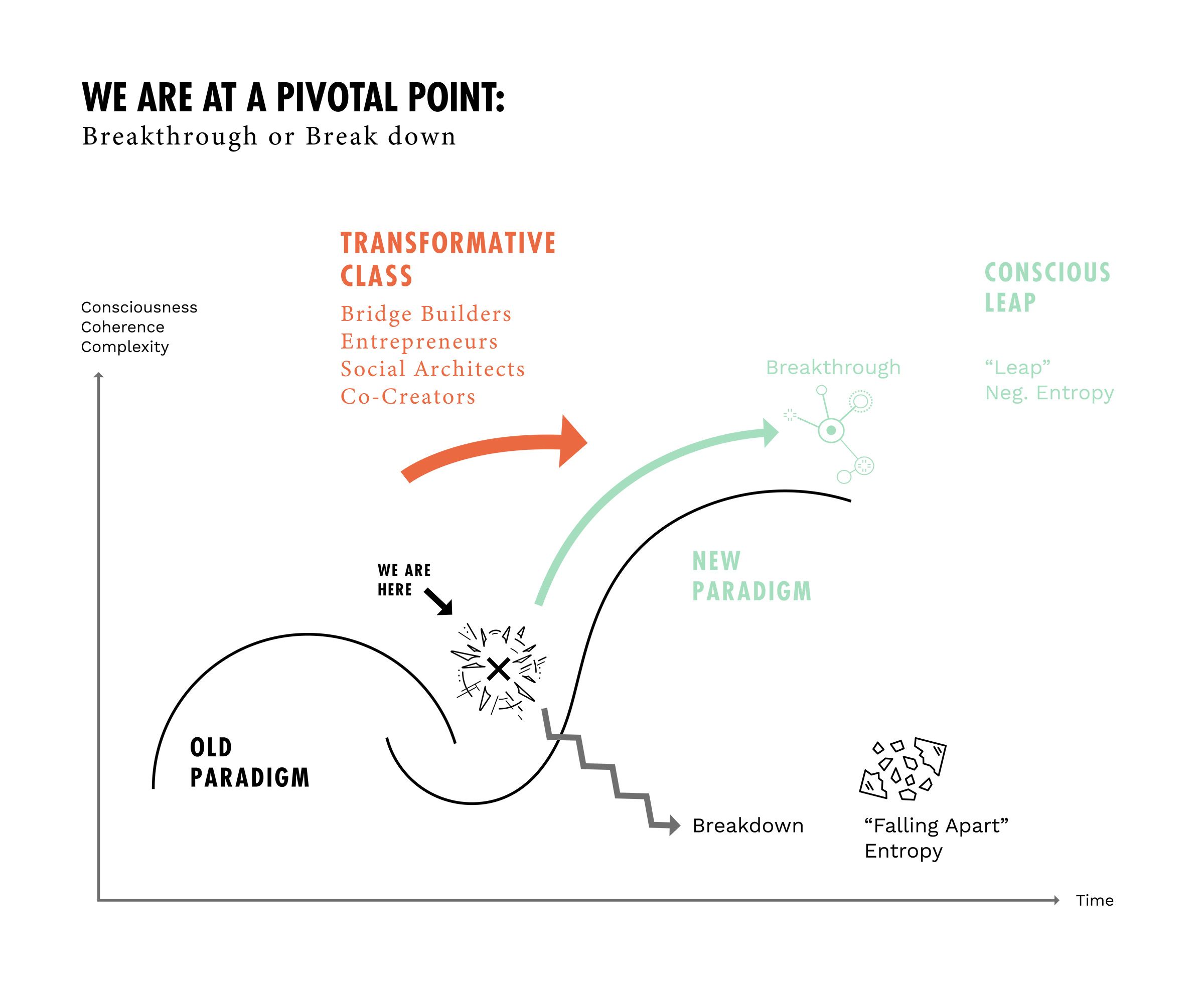Dear Transformers, dear Co-Creators, dear creators of a new time!
In the previous text we talked about facing fears. Looking at fears. That was a first step to look at seemingly unpleasant things and discover their potential. Those who have tackled this can now go even a little further. Because if I really want a breakthrough into the heights, I have to go into the depths, into the metaphorical darkness:
Today I want to talk about what we call shadow work.
The shadow is the part of me that I don’t see. The Me I can’t see. Why is this important? It has to do with our development: We are born into the world and only become ourselves based on feedback, such as from our parents, and later school, peer group, etc. Our cultural imprint also educates. And what society perceives as good or evil inscribes itself deeply in us. As early as the age of five, children begin to make moral judgments. This is how we develop our personality. And our ego soon takes over the function of protecting this personality and keeping it stable.
Draw new strength from what is hidden!
There is a problem: True development lies exactly in this rest. In the dark, in those things you refuse to see. True development lies in everything of which we say: “That’s not me! I don’t do that!” Because these are the things that we have split off. Often these split-offs are rooted in very old experiences that we no longer want to have anything to do with. Maybe they were unpleasant, sometimes even traumatic experiences. These are the things that we then later no longer want to see. We are convinced that we have to get rid of them. The sum of all these unpleasant experiences that we no longer want and often don’t even want to look at, this sum is called the shadow.
The concept was coined by Sigmund Freud’s most famous student, who soon went his very own way, the psychoanalyst Carl Gustav Jung. He called it the hidden side of the human psyche. The shadow is everything that opposes the self-image. (But already C. G. Jung said that it includes not only “evil” but also many things from which positive impulses for development can come).
Today I would put it this way: The shadow is the sum of all ignored, suppressed, unexplored parts of ourselves. And that is a lot. The shadow is huge. There is an individual part and a collective part. The collective part includes what affects all of us, such as when we say of ourselves in our culture that we are Christianized, modernized, Westernized. Then everything else that doesn’t fit in with that lies more or less in the shadows. That is the other, the foreign.
There is a collective shadow and an individual shadow. We can learn from both.
A collective shadow is also the separation from nature from which we suffer today. The human-centered worldview has distanced us further from nature – subdue the earth, it says already in Genesis, right on the first pages of the Bible. In our thinking, too, we have separated ourselves from nature. But this attitude is also unproductive. Today, when we feel part of nature again, we reconnect – and can slowly dissolve an old collective shadow.
In terms of the individual, you could say: everything from our past that didn’t make us successful, that didn’t work, that has become part of the so-called shadow. But if you want to develop, the greatest potential lies exactly there. Everywhere where you say, “That’s not me, I don’t do that, that’s the others, I have nothing to do with that.” To look there now anyway, that is our work.
We have climbed the mountain. Now it’s time to dig deeper, into the shadows. To look once at what has been split off, also at the traumas, because they are frozen experiences that have overwhelmed us. We want to illuminate all of that now. Then we connect with it and integrate it and can grow, because we have a new, good connection with our blockages.
For conscious self-developers, shadow work is the deepest path with the greatest potential. The royal road to freeing oneself and becoming true self-authors.
There is no general recipe: your very personal experience counts.
How do you break free from the blocks I just mentioned? We want to get into a state where we say “I am” instead of saying “I am suppressing this”. In doing so, start from your own personal experience. The subject of shadows always has to do with personal experience. An example: Maybe you were often loud and creative as a child and lived out this side. And then you were often told, “Don’t do that, you can’t do that.” Your parents may have given you the following instructions: “Be quiet at the table. You have to straighten up and discipline yourself.” Always that “one” – many of us know that, unfortunately. What will happen? The child cannot defend itself, is dependent on the care of the parents. So it suppresses this part. Maybe it will be rewarded, become a popular personality that fits well into its environment. But this creative part is hidden in the cellar, so to speak. Now and then it comes out, in exuberance, but not with awareness and wisdom. It has wandered too deeply into the world of the shadow. You can no longer use it productively.
This is true even if you tend to idealize that side to some extent, as many of us do. Because one thing that often happens then is: you project this freedom (which you have forbidden yourself) outwards, and then you worship Steve Jobs, Elon Musik or Arnold Schwarzenegger. How they do what they want! How these people are always pushing their limits, always expanding themselves! Wow! But we actually worship in them the creativity that we have suppressed in ourselves. This is called Golden Shadow.
Both are a shadow. Whether we go into the devaluation of others or into the exaltation. Neither is productive. We have to try something else. Namely, we have to look at what is driving us out of the shadow. Look! Because:
The way into the darkness is the fastest way to the light.
If you look, the unconscious slowly comes to light. Then the bound, negative elements transform into useful energies. Then we can transform what blocks us and unfold. A guru leads his disciples from darkness to light – that is the ancient Indian original meaning of this word.
As a concrete exercise, I would like to give you the 3-2-1 technique of the American philosopher Ken Wilber. You will find simple instructions further down in the newsletter under “Practice”. But I will give you an overview now: In the “3-2-1 work” you make yourself aware in three steps what a negative emotion is really about. The three steps direct the view from the outside to the inside, each step is connected with pronouns: 3 – he/she, 2 – you, 1 – me. It sounds complicated, but it is quite simple, here is an example: We start with an observation in the outside world. (3) For example: “Colleague Tilman is late again!” First him, then we look at him: What triggers him? That makes me angry! (2) Now imagine you would address him, now it’s about the “you” level. Only imaginary, he will never know about it. Now the sentences sound like this: “You are always so damn unpunctual! It drives me crazy.” And finally, be the other and look at yourself as if from the outside (1) – look at your ego, from the perspective of the shadow. Maybe something will come up like, “I’d like to take that freedom someday, too. I used to get yelled at in school when I was late, and soon avoided it out of fear.”
That’s the 3-2-1 technique. We end up with something brand new to think about and work with.
Imagine your shadow leader!
In my seminars and workshops I encourage you to look very specifically into your personal and professional life: Which people annoy me or stress me out? Who do I avoid dealing with? Who are these people I spontaneously think of, but I am not like them as a leader! Write this down once. And then also write down the things you don’t like about yourself. Afterwards, visualize for yourself: What is actually the biggest conceivable shadow leader that I can imagine? A completely negative leader who embodies everything you despise. Imagine it!
Go on a fantasy journey in which you meet this character. Perhaps give it a name, picture it exactly. And then ask this inner image: Hey, Shadow Leader, who are you? What do you want from me, what can I learn from you?
When you do that, strong negative figures often emerge. Aggressive fathers, authoritarian mothers, former bosses who hurt you, unfashionable teachers who oppressed you. Once upon a time, they instilled fear or perhaps pressured us. Today, we break free of that and look at them neutrally for once.
So when we have imagined, we ask: What have you given me? Are there things that I envy? Where I could learn more? In which I suppress something in me?
That could be: The will to do things better. The energy, the decisiveness to just do it, to go ahead. The power to complain less, to show inner strength and clarity. True, this entered our lives in an unfortunate and encroaching way at the time. But today, looking back, we now connect with that energy and for the first time draw something positive from the once unpleasant experience. We make it useful for us!
In the final step, we can then go completely into this past for a moment and become this person who was so negative at that time. We connect with it and take with us, for example, a desire to move forward.
In this way, we can use and respect this old shadow, which used to be on the outside, as an inner force.
Today there is a lot of talk about the phenomenon of “trauma”, you only have to look at the current book publications and you will be able to confirm this. Trauma certainly includes violent, threatening life events in some people, which should of course be treated in therapy. But trauma also includes crises that affect us all. Non-fiction author and trauma therapist Thomas Hübl draws parallels between the concepts of shadow and trauma. After a trauma, a part also emerges to which we no longer have a connection, something split off. It is then also a matter of reintegrating what has been split off. In this way, a new distance is created, the experience can lose its horror and no longer dominate us. Finally, those affected by trauma feel and fear that the old experience could be there again when a (new) trigger comes into their lives.
But this does not have to be the case. Neither with trauma, nor with the shadow. Of course, not everything will dissolve ad hoc. Shadow work is a path. The sooner you take it, the better. The more you will discover and unlock completely new potentials. Potentials that you don’t see if you don’t look into the dark.
Yours,
Achim



